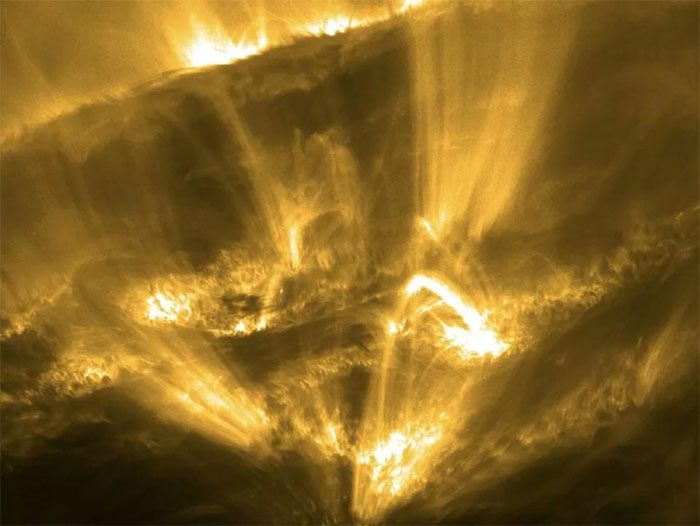According to Space, astronomers have recently discovered bright streaks resembling meteor showers appearing on the surface of the Sun.
The observations were made by the Solar Orbiter spacecraft from the European Space Agency (ESA), marking the first time these phenomena have been detected. Unlike meteor showers on Earth, which are caused by space debris igniting upon entering the atmosphere, meteor-like events on the Sun consist of massive plasma chunks falling onto the star’s surface at incredible speeds.

The Solar Orbiter spacecraft detected coronal rain at a distance of 49 million km from the Sun. (Image: Solar Orbiter EUI).
On Earth, most meteoroids do not reach the surface due to the dense atmosphere. However, the Sun’s atmosphere—the corona—is much thinner. As a result, meteoroids are not entirely obliterated when they fall, allowing them to reach the Sun’s surface intact.
This process can create brief but intense flashes of light, while also increasing solar material and shock waves, heating the gas in the corona above the impacts, which forms coronal rain. Scientists believe this discovery could help explain why the corona is much hotter than the Sun’s surface layers.
According to researchers, coronal rain—despite its different composition—follows the same physical laws as rain here on Earth. Instead of being made of water, coronal rain forms when local temperatures drop, causing solar plasma to condense into super-dense blobs.
Reaching a width of up to 250 km, these plasma blobs then fall to the Sun’s surface as a fiery rain at speeds of up to 100 km/s. The Solar Orbiter spacecraft detected coronal rain at a distance of 49 million km from the Sun.
The probe, equipped with high-resolution cameras and sensitive remote sensing equipment, found that gas was heated to about 1 million degrees Celsius, while being compressed under the coronal rain. This phenomenon lasts only a few minutes and is a result of the falling plasma blobs.
“The corona is too hot; we cannot probe it directly with a spacecraft. However, the Solar Orbiter’s orbit is close enough to the Sun to detect phenomena occurring within the corona, such as the impacts of ‘rain.’ This allows us to conduct indirect explorations of the coronal environment to understand its composition and thermodynamics,” said researcher Patrick Antolin (Northumbria University, UK).


















































